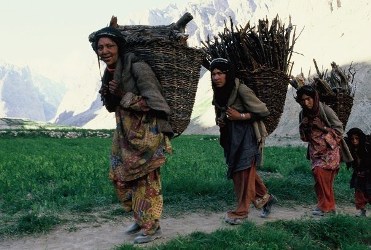


Hushe village is situated at 3050 m. Hushe is the last village of the Ghanche district of Gilgit Baltistan Pakistan. It is the highest village in the once extremely remote and impoverished valley. Hushe men began working as cooks and porters for expeditions in the 1960sHushe is the uppermost village in the valley of the same name. Like many of the upper valley villages in the Karakoram, Hushe villagers historically relied on subsistence oriented agriculture for their livelihood. Hushe villagers are environmentally conscious and work to keep their area nice. Hushe is no longer the poorest of villages, and its popularity as a trekking and climbing destination continues to grow. The agriculture economy is agro-pastoral and relies on the seasonal use of lower elevation field close to the village for crop cultivation and higher elevation pastures for livestock grazing. It seems that any sort of ‘special education’ program would be beneficial for these individuals and their families. Program activities could be as simple as singing, playing, and doing basic physical exercises. Even if only offered for a few hours a day for a few days a week during the summer season, such a program would provide stimulation to the individuals and relief to their families, and would set a precedent for more public support of disabled residents in Hushe. The town is reached along a very rough road which is often cut off to traffic. Hushe has a population of 779 inhabitants with a life expectancy of 53 years, 45% of who are under 15 years of age and who subsist under precarious living conditions. The town’s mud houses have been built along the main street, which is intersected by narrow lanes. These small and fragile wood and mud dwellings are almost completely lacking in windows. They have no ventilation, running water or chimneys, which leads to an accumulation of smoke and dust causing problems of the eyes and respiratory system as well as numerous infections. Large families with 7 or 8 children in addition to grand parents live here in very small spaces. The means of subsistence in Hushe are mainly farming, a little livestock breeding and the work of the men as porters. Agricultural production is limited to wheat, potatoes and peas, but the output is insufficient. The latitude of the cultivated areas and the long harsh winter, with temperatures dropping below -20ºC, make agricultural development difficult.
